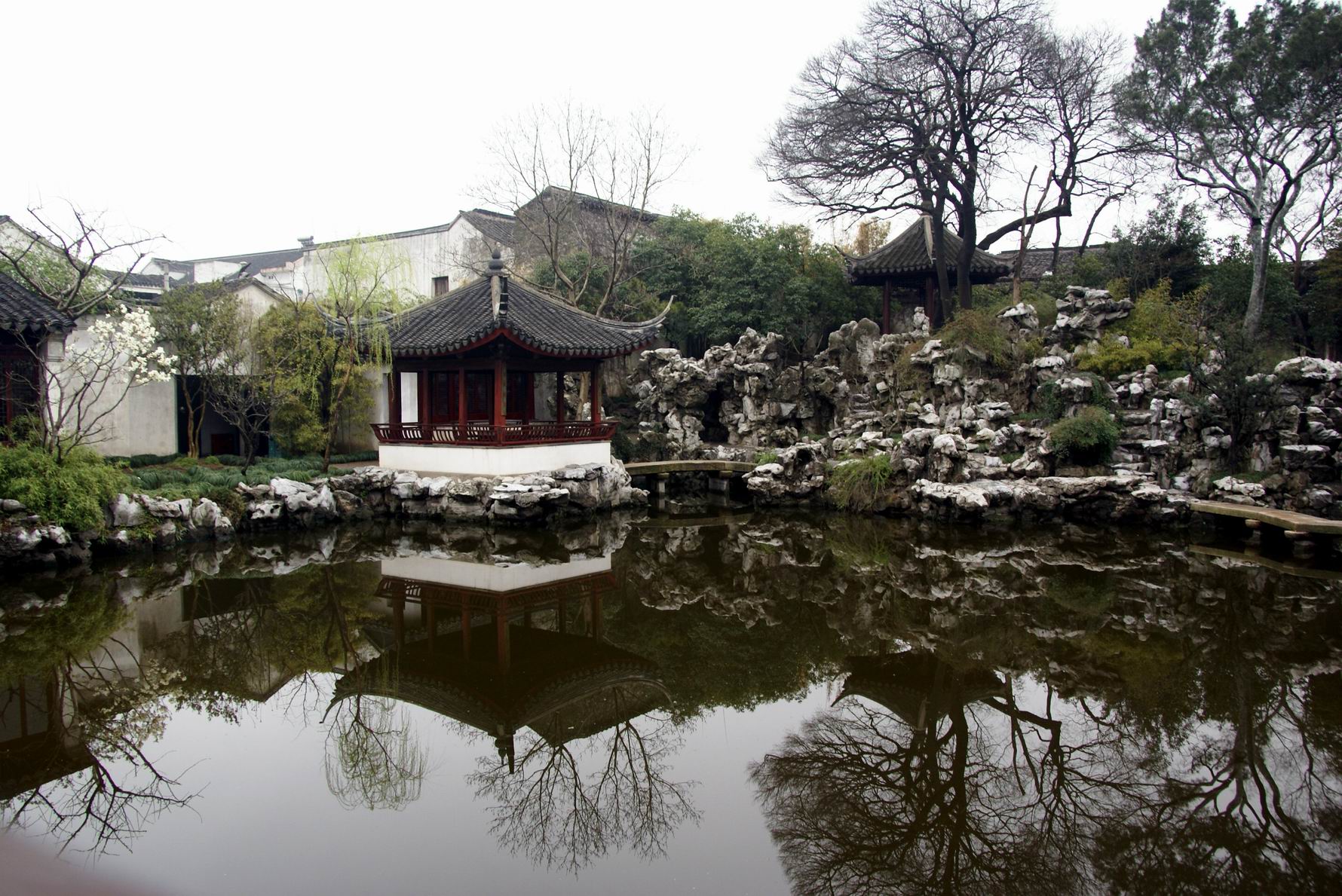Mid-lake pavilion reflects Chinese aesthetics

The pavilion in the Garden of Cultivation or Yipuyuan, a World Cultural Heritage item, captures the representative characteristics of Suzhou traditional gardens: small but exquisite.
Mid-lake pavilions are a kind of pavilion constructed precisely at the height of the surface of the water, and are a typical feature of Chinese gardens. Mid-lake pavilions can be seen everywhere in both classical and modern Chinese gardens. Their uniqueness exists in various architectural styles, profound cultural meaning and distinctive construction locations.
As a significant part of gardens, mid-lake pavilions can easily attract viewers’ attention because of their unique location and classical beauty. Ancient Chinese believed that there were a number of omnipotent immortals living on high mountains or in the ocean. Ancient Chinese naturally adored high mountains, oceans and rivers and endowed the landscape with religious relics. For thousands of years, most ancient Chinese could not visit the Kunlun Mountains in the Western Regions or Penglai Island in the East China Sea, the fabled abodes of immortals, because of their inaccessibility and the long distances involved. They regarded these places as rare as mirages in fairy tales, so certainly didn’t try to visit them. People eagerly yearned to “build a house on the surface of water,” just as romantic poet Qu Yuan (340-278 BC) wrote. Building a house on the surface of water is much more difficult than building one on the ground, but this form of construction intensively conveys Chinese people’s ideals of life and artistic imagination: living like immortals. In the history of Chinese culture and art, viewing water, or fishing in the river or lake, is not only associated with living a free and easy life but also represents living a sequestered life or the pursuit of freedom without fame or wealth.
As one of the ideographs of Chinese gardens, the water surface of the lake, where a mid-lake pavilion stands, should represent an ocean instead of a small pond. Thus, the whole landscape should give viewers an impression of living near a remote, serene ocean. Lakes in gardens, especially private gardens, cannot be built as large as the Kunming Lake in the Summer Palace, the royal garden of the Qing Dynasty (1616-1911). This means that mid-lake pavilions usually are small but exquisite.
Ni Xiangbao is from Soochow University.
